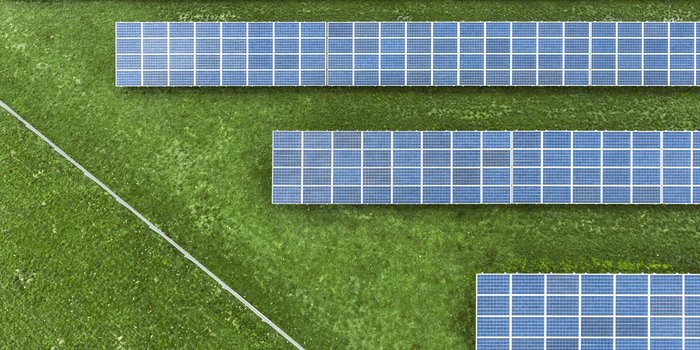
As in every sector, technology and consumer behavior are changing industries. None more so than the energy sector.
The increasing demand for electric vehicles, air conditioning and renewable energy are all helping to shape the future. But many goliaths of the energy world have been creeping slowly towards innovation and are out of pace with the technology and agile new market entrants coming onto the scene. Over the next 30 years the sector is likely to change dramatically from what it is today, in almost all areas of operation.
So, what are the key areas for innovation that energy giants need to focus on?
Batteries, solar panels and wind turbines
While fossil fuels have dominated global energy generation since the ’70s, zero carbon energy will account for an estimated 71 percent of global energy by 2050, according to The New Energy Outlook 2018 report.
To help secure a position in what will be the world’s largest energy generating method, energy corporations need to lead innovation to help reduce the costs of infrastructure and equipment needed.
Solar and wind power generating equipment are now cheaper than building large-scale coal and gas plants. As demand increases and efficiencies are made the cost of renewable energy equipment will drop further allowing wider adoption, lowering the barrier to entry for smaller players who previously wouldn’t have been able to operate in this market.
While the equipment to generate renewable energy is becoming more cost effective, the method of storing the energy is what makes or breaks renewables reaching the predicted market share. The energy sector plans to invest $548 billion into battery capacity over the next 30 years, however 27 percent of energy executives feel it’s an insufficient investment (Lloyd’s Register 2018). Most innovation over the next 20 years will likely be around lithium-ion, the rate of charge, improvements to energy density and lowering costs by reducing the amount of cobalt used in the battery itself. But more investment and innovation is needed if renewables are to provide the on-demand power supply expected by industries and consumers.
Grid optimization
From developing ways to enhance management and utilization of energy production and delivery infrastructure, to inexpensively controlling and shifting energy peaks locally rather than across the entire grid, grid optimization holds some crucial areas for innovation.
A host of new market entrants and startups are looking to fuse decentralized computing with decentralized energy. Companies such as Drift are removing the energy supplier from the equation altogether, offering the first real-time green energy trading platform. Drift and other such disruptors are using machine learning, high-frequency trading and blockchain technology to drive down the cost of energy by aggregating energy assets such as rooftop solar systems and working directly with electricity producers.
Green Mountain Power, another innovator in this space, works by adding batteries to individual homes, allowing the company to draw from the network of batteries creating a micro-grid solar and storage facility.
Incumbent energy giants must innovate in this area to maintain market share as the model for delivery and buying power shifts.
Consumer control and transparency
Market by market there will be differences in consumer behavior, from individual’s propensity and ease of being able to switch supplier (sometimes enforced by regulations), and their interest in renewable energy (supported or hindered by government policy, regulations and countries own natural resources).
Differences aside, many consumers expect a far superior experience when it comes to energy providers than is currently on offer. Opening up the market to startup niche energy suppliers who focus on giving customers more control over their energy. Predictive analysis using machine learning and smart connected devices are technologies being used to enable consumers to oversee their energy usage and plan for the future. These new ways of engaging with energy suppliers will become expected by consumers and thus further innovation in this area is needed to keep up with more agile, technology-driven competitors.
More than just power
Startups have also begun to bridge the gap between a utility provider with little to no brand loyalty into brands that connect to consumers on a personal level. Howz is a smart home monitoring system that tracks home electric usage to detect any unusual behavior, to enable the elderly to live independently for longer. Such products are helping consumers to develop brand loyalty in a market where there was previously little choice. Developing deeper connections with consumers in this way will become even more important as decentralization and lower barriers to entry mean new players enter the energy market.
Are you innovating in the energy space?
My company, L Marks, has partnered with American Electric Power to launch IlluminationLAB. The program is designed to help AEP find promising new technologies and innovative ideas focused in four areas — customer experience; grid optimization; efficiency, operations and maintenance; and electric mobility/electrification.
IlluminationLAB “is a bootcamp, energy summit, and 10-week proof of concept program wrapped into one,” according to its website. Based at AEP headquarters in Columbus, Ohio, the Lab will accelerate startups within AEP by collaborating on use cases and trialing products at scale. If you’d like to find out more check out IlluminationLAB. The deadline for applications is April 7, 2019.
